




THE DAILY EMERALD
The Daily Emerald is published by Emerald Media Group, Inc., the independent nonprofit media company at the University of Oregon. Formerly the Oregon Daily Emerald, the news organization was founded in 1900.






The Daily Emerald is published by Emerald Media Group, Inc., the independent nonprofit media company at the University of Oregon. Formerly the Oregon Daily Emerald, the news organization was founded in 1900.
“Oregon women’s basketball guard Jennah Isai leaves program” by: Lily Crane (Jonathan Suni/Emerald)
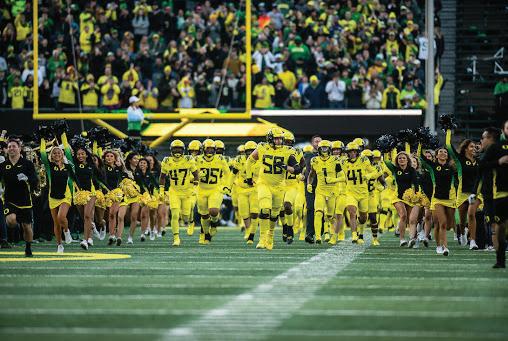
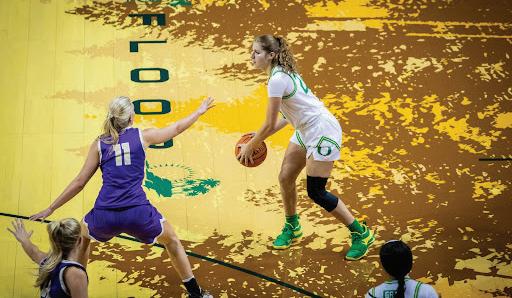
“Oregon lands top JUCO recruit George Silva” by Brady Ruth

Summary: This irreverent and near hallucinogenic take on the story of King Arthur might be nearing 50 years old, but its humorous feel fits with the anti-intellectualism and surrealism of any 10 minutes on TikTok today. Follow King Arthur as he meets and rallies his Knights of the Round Table to the cause of finding the famed Holy Grail, a task assigned to him by God, who makes a brief cameo. They cross through medieval Europe, dueling the valiant Black Knight, battling the fierce Beast of Caerbannog and bargaining with the riddling Bridgekeeper. Everything about the narrative and filming feels tied together by one string of frayed, on-fire yarn — a yarn that took the entirety of the film’s budget. Any scene seems plucked straight from the writing desk without second thought. When it gets weird, know it won’t get any better, but you won’t ever want it to.
Voices of UO
Scan here or visit the Emerald’s social media to participate in our next Voices of UO. “Do you trust AI software?” “How do you think people can use it for good?”



We want to hear from you: Email editor@dailyemerald. com to submit a tip or a letter to the editor. The ideal length for a letter is 200-500 words, but we publish letters of various lengths online.
For updated coverage of sports and digital-exclusive content, go to www.dailyemerald.com

The goal of this survey is to help the Daily Emerald determine who our publication is reaching on campus and how we can do a better job addressing the needs and interests of the communities we serve. We thank you for your feedback!
On Nov. 17, 2022, University of Oregon Executive Vice President Janet Woodruff-Borden said UO will pause its subscription journal package with Elsevier Publishing Company at the end of 2022 in an email announcement.
Elsevier is a Dutch company based out of Amsterdam, Netherlands that publishes academic journals, according to Elsevier History. It is one of the largest publishing companies putting out 18% of global research, and over 2,700 digitized journals, according to Fast facts about Elsevier. More than 600 Elsevier journals are open access, according to Fast facts about Elsevier. Open access means online content which is accessible to anyone free of charge, according to Springer.
UO partnered with Oregon State University and Portland State University, who also subscribe to Elsevier’s journal package, to negotiate prices with Elsevier. All three universities ended their subscriptions after failing to reach an agreement.
The Elsevier subscription journal package was UO Libraries’ largest expenditure, making up 10% of its entire budget spendings, Woodruff-Borden said in her email.
Elsevier’s prices have increased each year and have outpaced inflation, Woodruff said in her email. “These unsustainably high and escalating costs ignore modern realities, such as the increasing prevalence of open scholarship, and undermine our very purpose as a public research institution—to advance the creation and dissemination of new knowledge,” she said.
The three universities were looking to cut the cost of each of their subscription packages by 50%, which Elsevier was aware of going into negotiations, Bowman said.
Part of the disagreement between Elsevier and universities was that Elsevier was charging the same price, even though many of its articles were open access, Fowler said. In other words, anyone could have access to certain Elsevier published content without paying a subscription to Elsevier.
“We should not have to supplement that cost or that fee for Elsevier by paying them basically a second time for access to an article,” Fowler said. This is true especially if the authors are from one of the three universities here, he said.
The emergence of open access content is changing the education market, Deitering said. “There’s going to be other changes happening in the market, and I think we’re all playing a little bit of wait and see to see where it goes,” Deitering said.

UO, OSU and PSU are not the only universities who’ve negotiated with Elsevier. The University of Washington also decided to end its contract with Elsevier for 2023. Previously, the University of California ended its Elsevier contract in 2019.
“Publishers like Elsevier benefit from publicly funded research and
BY LILY FJELDHEIMElsevier is one of the “Big 5”, the biggest publishing companies of academic content in the world, which includes Springer Nature, Wiley, Taylor & Francis, SAGE and Elsevier, Deitering said.
Although the three universities act as a team in negotiating with Elsevier, the specific negotiations are unique to each university. Compared to UO and PSU, OSU Libraries pays the most for its Elsevier journal subscription package, Deitering said. OSU offers robust programs in areas such as natural resources, agriculture and applied science and technology, and Elsevier’s content is particularly “deep” in those areas, she said. “We’re not negotiating for one contract that applies to all three institutions,” she said.
When asked for comment on the contract negotiations, Elsevier said in an email, “Elsevier has been working with University of Oregon, Oregon State University and Portland State University to meet their budget requirements while continuing to provide researchers with access to Elsevier content. We worked hard to put flexible offers on the table and regret that we were not able to reach agreement with UO, OSU and PSU. We hope to welcome them back as a customer in the future.”
As of Jan. 1, UO students no longer have subscription access to new Elsevier content published on a subscription basis, according to UO Libraries’ Elsevier Contract Negotiations. However, UO Libraries will retain access to 189 of the most subscribed to journals ending Dec. 31, 2022 in perpetuity and 609 journals from before 1994 which UO purchased as backfiles, according to UO Libraries’ Elsevier Contract Negotiations.
Students will still have access to new Elsevier published content through UO Library’s interlibrary loan service and Article Galaxy Scholar.
Because of the contract lapse, students and faculty may experience delays in having access to requested Elsevier articles, Salaz said. “In the long term however, we are confident that students, researchers and scholars everywhere will benefit from a system that doesn’t exploit academic labor for excessive profit,” she said.
After assessing the impact of their individual contract terminations, UO, OSU and PSU will resume contract negotiations with Elsevier in 2023. Fowler is optimistic about future negotiations with Elsevier. “It’s possible that Elsevier may start to rethink things if enough schools are dropping out of these deals,” he said.
For graduate students wanting to learn more about the contract negotiations, University Librarian and Vice Provost Alicia Salaz will host a Q&A session over Zoom on Wednesday Jan. 11 at 11 a.m
UO pauses its Elsevier subscription journal package and stands up for open access research alongside other universities.(Patrick Tomasso/Unsplash)












Ye, previously known as Kanye West, has become a controversial figure in the past decade. With incidents such as supporting Donald Trump, dismissing slavery and public statements on his divorce from Kim Kardashian, Kanye has said it all. However, the rapper began spreading antisemitism in the past few months. Now everyone is asking the same question: What happened?
Ye was often excused for his actions due to mental illness and pure ignorance. Shit hit the fan in October 2022 during Paris Fashion Week, when Ye wore matching “White Lives Matter” shirts with conservative pundit Candace Owens. Since then, Kanye has publicly supported the Nazi party and made antisemitic comments on social media.
In an interview on the Alex Jones Show, Ye stated, “The Jewish media has made us feel like the Nazis and Hitler have never offered anything of value to the world.” He followed with, “They did good things too. We’ve got to stop dissing the Nazis all of the time.” Twitter suspended his account on numerous occasions for his hate speech and conspiracies against the Jewish community. All Tweets were taken down immediately.
Kanye has justified antisemitism within society, making him a new face of white supremacy. Right wing extremists feel emboldened in supporting an
antisemitic movement. Because of this, violence against the Jewish community is at an all-time high.
Kanye West has always been a popular name amongst Generation Z. His influence on the music industry is hard to forget. Yet a majority of his fan base choose to ignore his recent controversy. The most common rebuttals I hear are: “But he made ‘Graduation’” and “I miss the old Kanye.” By defending Ye and his music, fans actively stand by antisemitism.
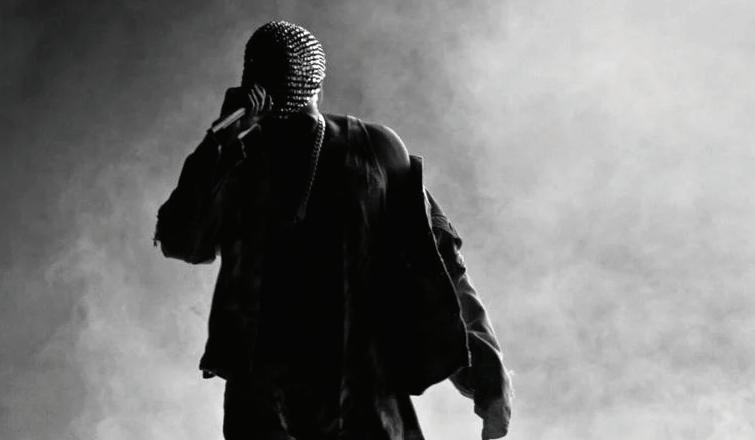
Kanye inevitably influences young adults, specifically college campuses. Lily Hanson, a Jewish student at Cal Poly State University, believes antisemitism is growing rapidly on campuses. “College kids love Kanye West so much that they are saying, ‘Well, if Kanye said this then it must be true.’ They’re not going to condemn it,” Hanson said.

Whether college students know it or not, Kanye is influencing their perspectives on the Jewish community. Students won’t necessarily engage in antisemitism, but their understanding on the severity of the issue is being undermined. College campuses have a long history of antisemitic scandals and violence. Rather than the issue being challenged, it is being normalized.
On the other side, there is the issue of college administrations. Universities cannot control what
Kanye West says or does. However, it is their duty to address the rising levels of antisemitism on campus. In a time where Jewish students are silenced, administrators must strive to make their campuses a safe place.
“College campuses need to do a better job at addressing it, such as supporting the Jewish unions and actively doing things that show the college condemns acts of antisemitism,” Hanson said.
When universities remain silent, they endorse antisemitism on their campuses and society. So it’s time to make a public statement. Support the Jewish unions, such as Oregon Hillel. Provide resources on how to identify and stop acts of antisemitism. But most importantly, make Jewish students feel heard and welcomed.
Winter Warm Up - Campus Tours
EMU O Desk 11 a.m.-1 p.m.
Tuesday Treats EMU, near the O Desk 1 p.m.-2 p.m.
GlobalWorks International Internships Information Session
EMU, Mills International Center 3 p.m.-4 p.m.
MLK Day of Service TBA 8:45 a.m.- 1 p.m.
ASUO-TFAB Tuition Forum EMU Ballroom 6 p.m. - 7:30 p.m.
Environmental Justice Speaker Series
EMU Coquille Room
5:30 p.m. - 6:30 p.m.
Monday Game Nights EMU, near the O desk 6:00 p.m.-7:00 p.m.
Tabletop Gamefest-Palooza EMU Crater Lake rooms 6:00 p.m.
Student Food Pantry
710 E. 17th Ave. 4:00 p.m.-6:00 p.m.
Native Studies Research Colloquium
Many Nations Longhouse 3:00 p.m.-4:30 p.m.
Soul2Soul
Lyllye-Reynolds-Parker Black Cultural Center 5:30 p.m.
Men’s Basketball Vs. Arizona State
Matthew Knight Arena 6 p.m.
Climate Resiliency Button Making
EMU, O desk Noon- 2 p.m.
UO Surplus Furniture Sales Romania Warehouse, 2020 Franklin Blvd. 12:30 p.m.-2:30 p.m.
Oregon: Where Past is Present exhibit Museum of Natural and Cultural History 10 a.m.-5:00 p.m.
Men’s basketball vs Colorado Matthew Knight Arena 6:00 pm
Free First Friday at the Museum

Museum of Natural and Cultural History, 10:00 a.m. - 5:00 p.m.
winter term under way,
With














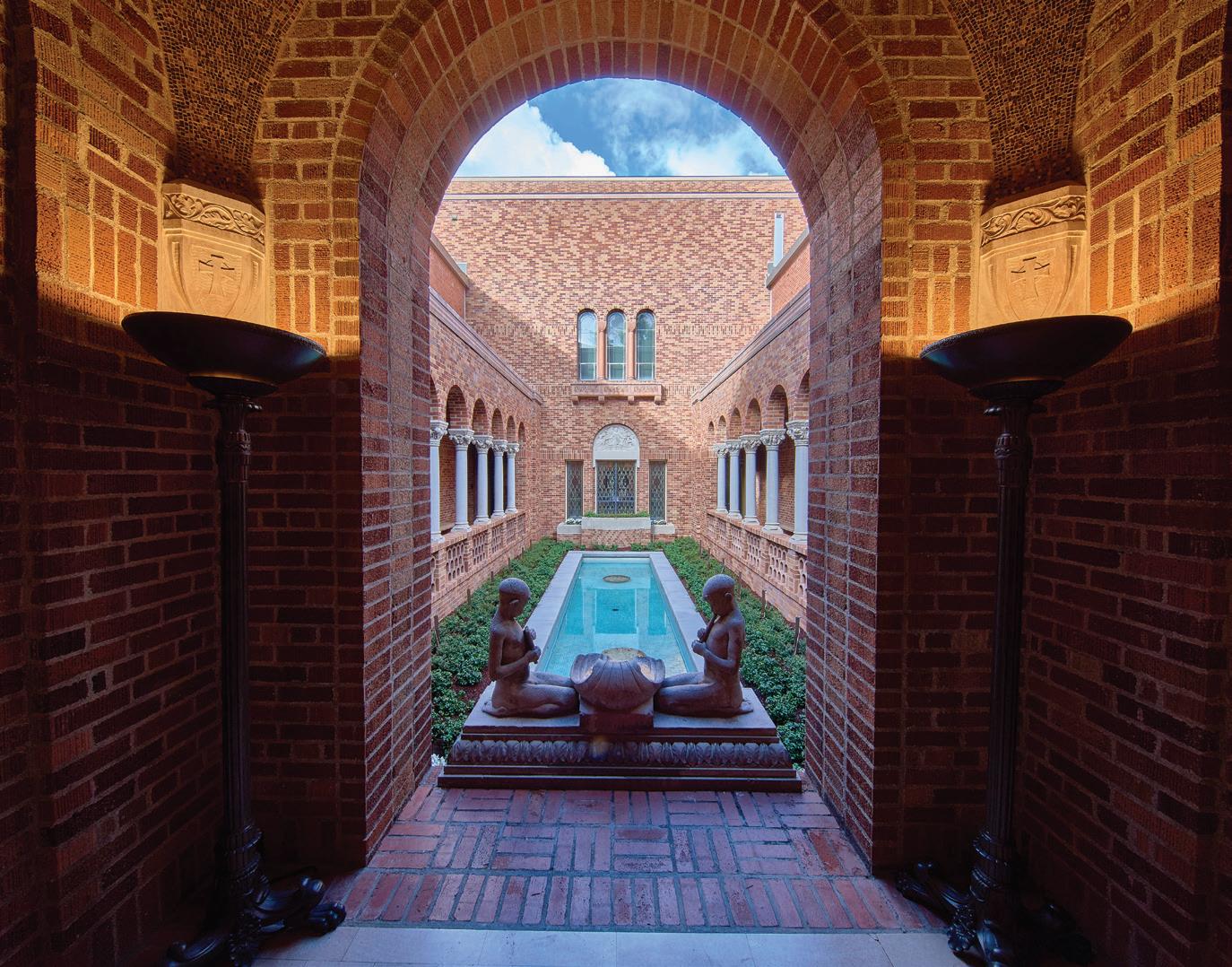


A recently-passed Oregon gun control measure is blocked following a slew of lawsuits and concerns from sheriffs, but activists are still confident the measure will succeed.
Measure 114 passed with slim margins last November and was the closest Oregon ballot measure race in 2022. Less than 25,000, or about 1.3% of the total votes, made the difference between the measure passing and not, according to election results gathered by the Oregon Secretary of State.
It requires local law enforcement agencies to develop a permit-topurchase process for buying firearms, requires applicants to complete safety training and a criminal background check, and prohibits magazines capable of holding more than 10 rounds of ammunition.
But, with the issue of funding and staffing the permit-to-purchase program falling on local law enforcement agencies, Oregon sheriffs say they are unprepared to fill the requirement.
Deschutes County Sheriff and Oregon State Sheriffs’ Association president Shane Nelson said one of the main reasons for the OSSA’s dissatisfaction with the measure was it will redirect resources away from protective law enforcement services toward completing background checks and issuing permits in a video on the OSSA website.
Nelson said OSSA did an in-depth analysis of the financial impact implementing Measure 114 would have on local police departments and sheriff’s offices throughout the state. OSSA estimates the
implementation would cost local law enforcement agencies just over $49 million annually, with expected permit fees covering $19.5 million.
“Measure 114 will require local law enforcement agencies to create and fund a firearm permit process out of local budgets,” Nelson said in the video. “We [OSSA] have serious concerns about how this measure will adversely impact public safety in our communities around the state.”
Lane County Sheriff’s Office public information officer Tom Speldrich told the Emerald that the statement put out by the OSSA was a good representation of where the Sheriff’s Office stands at this point.
“We do not have the personnel or resources to provide for the permitting process as proposed by Measure 114,” Lane County Sheriff Clifton Harrold said, according to Speldrich.
After the measure was passed lastin November, opponents to gun restrictions were quick to file lawsuits against it. Four lawsuits were introduced in federal court and one in Harney County Circuit Court fighting the measure’s stipulations on large magazine restrictions and the permit-to-purchase clause.
A lack of personnel was cited as one of the major obstacles for implementing the permit-topurchase clause in the lawsuits.
As of 2022, Oregon has the lowest number of police officers per capita in the United States, with 284 law enforcement employees per 100,000 people, according to World Population Review.
Opponents of the measure, including Gun Owners Foundation

and Gun Owners of America, filed a restraining order in a Circuit Court in Harney County to halt the implementation of the measure on Dec. 2, 2022.
County Circuit Judge Robert S. Raschio granted the restraining order, citing Article 1, Sec. 27 of the Oregon Constitution, which says, “The people shall have the right to bear arms for the defence [sic] of themselves, and the State, but the Military shall be kept in strict subordination to the civil power[.]”
In another lawsuit, U.S. District Judge Karin J. Immergut ruled against a restraining order suggested by the prosecution.
Immergut said in her ruling that “the burden imposed by Measure 114 on the core Second Amendment right is minimal.”
The office of Oregon Attorney General Ellen Rosenblum stated that the state’s attorney general would file a mandamus petition asking the Oregon Supreme Court to review the lower court’s ruling. Late afternoon on Dec. 7, 2022, hours before Measure 114 was to be enacted, Oregon Supreme Court chief justice Martha Walters denied the state attorney general’s petition to throw out the Harney restraining order. Currently, the measure is not active.
Reverend Mark Knutson, an activist and preacher at Augustana Lutheran Church in Portland who helped pass the measure, said despite the conflicting court rulings and the stay on the implementation of Measure 114, he is not worried about its future.
“We know all four components of this law are constitutionally valid,” Knutson said. “I fully trust the implementation process, which is critical for this to be done justly and equitably.”
The Lincoln County Sheriff’s Office is one of the few Oregon police agencies planning to implement the permit-to-purchase clause of the measure, but Sheriff Curtis Landers said his office is unsure how big of a demand for permits there will be. Landers said they anticipate a large surge initially with the pace slowing over a few months.
“We do not have additional personnel to accomplish this so it will cause delays, and we will need to prioritize our services to our
citizens,” Landers said in an email to the Emerald.
Either the permit applications will slow to a manageable pace some time after the measure enacts or LCSO will determine if they need to add personnel, Landers said.
Lane County Sheriff’s Office is likely to use its existing Concealed Handgun Licensing staff to meet the increased demand for gun permits, Speldrich said.
Speldrich said Lane County Sheriff’s Office has three staff assigned full-time to the Concealed Handgun Licensing and Renewals section, and the CHL section typically has 20-35 initial licensing or renewal appointments every weekday except Wednesday. Wednesdays are “walk-in” CHL
renewal days, and there are typically applicants in line in the lobby all day that day, Speldrich said. There are roughly 25,000 CHL holders in Lane County currently, Speldrich said.
If someone applied for a CHL permit in December of 2022, Speldrich said, it would likely take staff until this May to process it. The rapidly increased number of applications caused by the measure would prolong that timeline even further.
Oregon is a “shall issue” state, which means law enforcement officials are required to permit to anyone who meets certain minimal statutory requirements. The permit application for a gun license in Oregon is $65, while a renewal permit application is $50.

The Oregon State Police saw an increase in background check requests in November 2022 by more than 300%, according to agency data, a response by gun purchasers, Speldrich said, to the unsure nature of the gun market after the passing of this measure.
Oregon State Police Superintendent Terri Davie told members of Oregon’s Senate Judiciary Committee that the agency was finalizing temporary rules to implement Measure 114, and a form has been drafted for those wishing to voluntarily complete the permit-topurchase process.
From
BY NICHOLAS LAMORAIn a city known for late-night games, parties and drinking, where can students grab a bite to satisfy those after-hour cravings? From decadent sandwiches filled with fried foods to cheesy ‘za, here are Eugene’s best late-night eats.
Located right behind Big City Gaming on the corner of E 13th and Willamette, Za Cart Pizza is the perfect place to live out your cheesy, saucy dreams.
The food truck, covered in colorful and eccentric stickers, serves up slices and full pies late into the night, staying open until 2 a.m. on Fridays and Saturdays.

The pizza finds a balance between light and heavy, with a slightly charred, crispy undercarriage leading up to a dense, fluffy crust. Robust notes of garlic in the sauce keep the slices flavorful, and the cheese ratio is on point for those who appreciate something not overbearing.
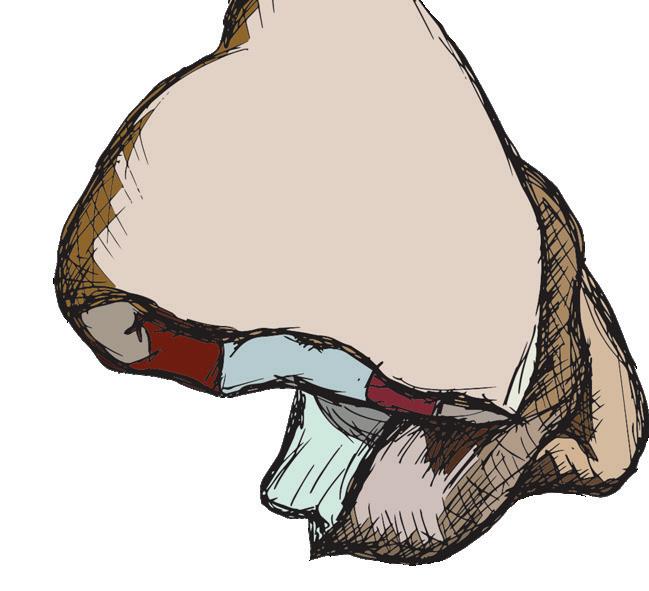
Whether you’re in the mood for a classic pepperoni slice, customizable toppings or something vegan, Za Cart has you covered.
Packing sandwiches with all sorts of fried foods and drenching them in sauce, Fat Shack fulfills your most gluttonous desires.
Sandwiches like the Fat Jersey (chicken fingers, cheesesteak, fries, mozzarella sticks and honey mustard) and the Fat Maverick (macaroni and cheese, chicken fingers, french fries and barbecue sauce) seem like crazy concoctions of a drunk daze, but they are very real and very filling.
If you’re not in the mood for a sandwich, you’ll probably find something else on the menu to indulge in: burgers, fried appetizers or a rich shake. And if you’re still hungry, you can always grab fried Oreos or cheesecake bites for dessert.
Staying open until 3 a.m. on Fridays and Saturdays and 1 a.m. every other day, customers can always stop by the restaurant on E 13th and Patterson to cure those late-night munchies.
Open until 3 a.m. every day, The Dough Co. is a tried and true late-night
more than just calzones. The local spot offers fresh-baked cookies with crispy edges and soft centers, including flavors like chocolate chip, peanut butter and oatmeal. You can also grab a pint of house-made ice cream if you want to cool down your night.
If you’re searching for some food that won’t break the bank, you have got to go to Gotcha Burger.
Open until 4 a.m. on Fridays and Saturdays and 1 a.m. on weekdays, Gotcha has everything you’d need to satiate your hunger: burgers draped in cheese, sauced-up chicken sandwiches and chili-cheese fries if you’re looking for something messy.
Everything on the menu is priced under $7 (including burgers for $2.99), and while the restaurant isn’t too close to campus on W 7th and Chambers, the drive-through makes it easy to grab your late-night grub and go.
With a bold interior decorated with vibrant graffiti art, Dave’s aesthetic is just as hot as its fried chicken. The fast-casual restaurant located on E 13th and Alder boasts a simple but flavorful menu, featuring piquant flavors for those wanting to spice up their night.
Customers have the option of selecting from seven levels of their preferred heat — whether that’s on the mild side or something much more abrasive like “reaper.” You also get the choice of enjoying the chicken straight as a tender with a slice of bread, or you can make it a slider stacked with pickles, kale slaw and cheese.
The chicken itself is exactly what you’d want: tender, juicy meat coated in a crispy, flavorful exterior. Plus, each meal comes with Dave’s seasoned crinklecut fries and zesty sauce to complete the full experience.
If you’re feeling like that’s not enough, order a side of creamy macaroni and cheese or a thick shake to finish off the night.
At the end of the night, it doesn’t matter if you’re out with friends, looking to satisfy your cravings or just trying to recover from a rough day; a good latenight meal hits the spot.
























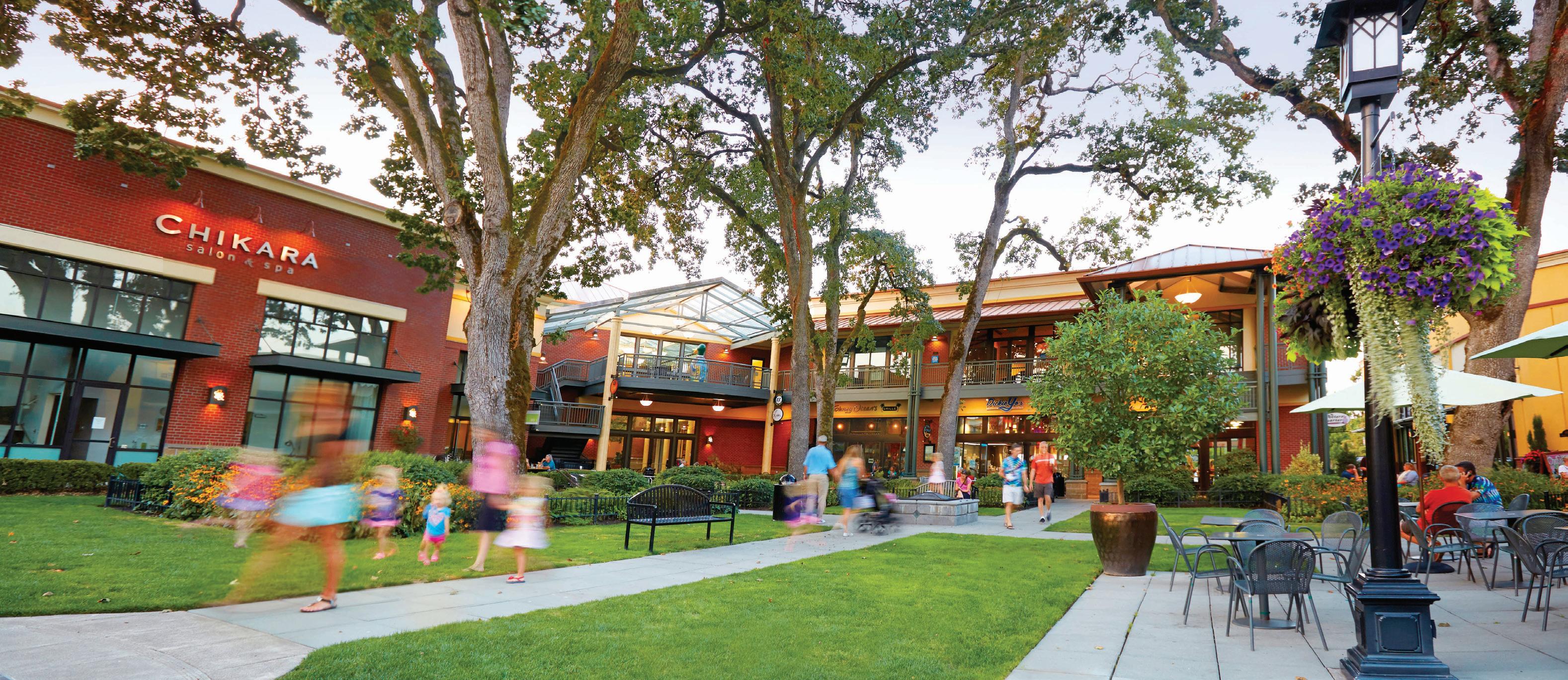










After a rough first quarter for both teams, Oregon rallies in the second half and shows strength.
BY EMMA LOGANIn the first few minutes of the game, freshman star Grace VanSlooten found herself on the bench after two quick fouls. In an unlikely fashion, she spent most of the time not playing and contributed no points in the first half. She left the locker room coming out of the half with what seemed like one goal in mind: score points. And that she did.
VanSlooten started an explosive third quarter after scoring right off the bat, leading to Oregon’s 82-62 victory over Arizona State. After a rough first half for both teams, the Ducks led the Arizona Sun Devils by only six points and trailed most of the time but turned that around and earned their first Pac-12 road win of the season.
“Anytime you get a road victory in the Pac-12, that’s good,” head coach Kelly Graves said.
The Ducks outscored the Sun Devils 27-14 in the 10 crucial minutes of the third quarter. The 6-foot-8 center Phillipina Kyei contributed to this effective third quarter by starting a lot of transitions with 18 total rebounds.

“38 rebounds in the last two games, that’s getting it done on the board,” Graves said. “That’s called dominance.”
Kyei collected her fifth double-double of the season after scoring 10 points. She leads the team in double-doubles.
VanSlooten’s quiet first half did not stop her from being one of Oregon’s leading scorers. She scored 12 of her 16 total points in the third quarter and started the 14-2 run that the Ducks desperately needed coming out of the half.
Taya Hanson had 13 points off the bench, with 9 of those points coming from 3-pointers in front of her former home team. The senior transfer is using her final year of eligibility at Oregon.
Freshman forward Kennedy Basham is an Arizona native and had a strong homecoming showing, as she played 15 minutes. Her recent return to the team after injury has been welcomed to the short bench.
“We are limited on how we can play her right now and that’s her max,” Graves said.
While not playing much, she managed 5 points and six rebounds. She has strength with her mid range shot which coach Graves believes will begin to change the way the Ducks play moving forward.
Oregon will next make the trip to Tucson where it will face the Arizona Wildcats Sunday at 4 p.m.








It seemed as if the ball was going to trickle over the boundary line.
Hannah Pukis had just backset it over to Mimi Colyer as the tandem of freshman attempted to end a back-and-forth rally between Oregon volleyball and USC.

The Ducks were leading 14-12 in the fifth set, needing just one more point to complete a three-set comeback on the Trojans. Despite it looking long, Colyer’s return nestled just inside the margins.
The team rushed over to Colyer for a giant group hug. Her shot meant Oregon had pulled off a reverse sweep for the second time in a week. The win extended their streak to 11, and Colyer had 29 kills, setting a new career high.
Since she’s arrived on campus, she has been an asset to the team and has made an immediate impact, which isn’t always the case for a freshman. Colyer didn’t need time to adjust to the speed of the collegiate game because she’s always been around competition. It’s what her family dynamic was predicated on.
“I’ve always been around competition — like, healthy competition,” Colyer said. “Through growing up in sports, I’ve been able to see competition as a good thing, and to make sure I’m always in the right headspace to compete.”
She’s the daughter of two former collegiate athletes at Long Beach State. Understandably, competition was at the root of her family’s dynamic. Simple occasions like spending time at the house or on family outings easily turned competitive.
The competitiveness that comes from her relationship with her family is present in her play at Oregon — it certainly helped Oregon comeback against USC. It started when she was little, and it’s the first choice of activity when everyone is home. Since everyone plays different sports, they couldn’t keep up with each other on the court or the field. What they did have in common was that competitive energy and it found its way into family game night.
It became so popular within the Colyer household that on special occasions, like New Year’s Eve, instead of watching the countdown on their television, they would be posted in the family game room.
In 2020, that task became tougher as they couldn’t invite any extended family over because of the pandemic. They were starting to get antsy.
“We created the Colyer Olympics,” Nicole Colyer,
Mimi’s mom, said. “We did a bunch of funny games, but everyone kept it competitive.”
There were some nights where people wouldn’t talk to each other, but in a house full of athletes, it’s hard to keep things gentle.
Sitting on the phone, talking to Mimi’s mom, she’s sifting through the game closet, listing off different games that they play together. She told me about this game they loved to play called “Who’s the Goat” where you pick who’s going to be the best at random challenges and then you vote by throwing a small rubber goat at the winner.
“It got to a point where Mimi would beat us at everything, so we would throw all of the goats at her,” Nicole said.
The motivation and determination that she has during game nights manifested itself in sports. She started out playing club soccer until she found volleyball. She played locally until she realized that this was the sport she wanted to focus on.
Before arriving in Eugene, Colyer was the 43rd ranked recruit in the country. The Lincoln, California, native finished her senior season with 607 kills and a .564 hitting percentage, the second-highest in the state.
“I’ve coached some of the best players out of the Sacramento area, and I’ve never seen anyone that was as good at taking information and putting it into action,” Lincoln coach Jeff Deter said. “Her ability to apply what was taught was amazing and her length and height, along with the ability to control the ball, is exceptional.”
When Deter took over the coaching duties at Lincoln High School, he was told that he was going to have one of the best players in the area. After the first week of practices, he realized that Colyer was going to be special.
“It was because of how fast she learned, and she was like that with everything. She will learn something from every situation.” Deter said. “When she was hitting against her
teammates that weren’t as skilled, she would get more creative because she understood that pounding the ball every time wouldn’t benefit her.”
Colyer always wants to learn. She’s able to take away something from every coach and chooses what she wants to add to her arsenal — a skill that’s helped her adapt to each new environment she faces.
She’s won eight Pac-12 Freshman of the Week awards, the most in conference history. She’s been named Pac-12 Freshman of the Year and AVCA AllRegion Freshman of the Year. She’s broken school records, despite being on campus for less than a year.
“She’s a fighter, for sure, and a competitor,” Oregon volleyball head coach Matt Ulmer said. “The more that comes out, the better we’re going to be.”






























































































































































